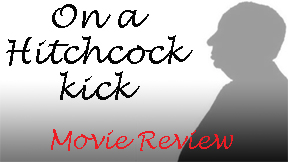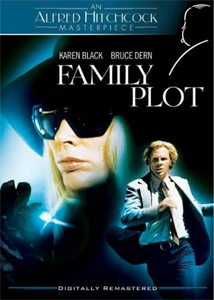Alfred Hitchcock proves he has his filmmaking faculties intact at age 77 with his impressively engrossing final movie, “Family Plot” (1976). While his prime may have passed, it’s a treat to see the grand master’s storytelling in its most modern era, with Seventies cars, carpets, con artists and consistent California sunshine.
Ernest Lehman’s (“North by Northwest”) amusingly sharp screenplay, from Victor Canning’s 1972 thriller novel “The Rainbird Pattern,” is a fascinating parallel (and then crossover) narrative of dual criminal couples who work hard to not work traditional jobs. The low-level con artists are fake medium Blanche (the ageless Barbara Harris, in her 40s at this time and starring with Jodie Foster in “Freaky Friday” the same year) and cabbie boyfriend George (Bruce Dern).
The high-level criminal couple is Arthur (William Devane, whose natural smirk is just right) and Fran (Karen Black). They kidnap rich people for ransom. They have the process – involving knockout drugs, a hidden basement room and disguises for Fran — down to a science. An especially tasty scene finds Arthur being “helpful” to police detectives by describing the very scheme – taking the ransom diamonds and breaking them down into smaller diamonds – he’s perhaps doing offscreen.

“Family Plot” (1976)
Director: Alfred Hitchcock
Writers: Ernest Lehman (screenplay), Victor Canning (novel)
Stars: Karen Black, Bruce Dern, Barbara Harris
Any time I got slightly bored with one storyline – which wasn’t often, after a too-slow opening establishing the fake psychic scheme – Hitch switches to the other one, thus creating a crossover dribble of momentum.
Hanging over everything is the question of how the two threads will come together. They gradually interweave as the amateur con artists look to track down Arthur for legitimate reasons – he’s the unknowing heir to a fortune of one of Blanche’s clients, and Blanche will get a payout for finding him.
A gem of a finale
Even in his final film, Hitchcock doesn’t lose sight of what truly matters in storytelling, so even though the impetus for the plot doesn’t pay off, “Family Plot” is smartly satisfying in its irony. The way the villains are defeated is delicious.
Despite having life-or-death stakes at times, “Family Plot” is fun. Black plays a worried ice queen, but the other three leads have a blast in their roles, with Harris and Dern developing into an oddly perfect dysfunctional couple and Devane playing a villain so smooth at his job I almost root for him.
The biggest action sequence, a car chase through twisting mountain roads, is technically poorly done, as Hitch still uses his favored (unrealistic) rear projection and tire-screeching sound effects that date back at least to “Notorious” from 30 years prior. He stages it comedically, with Blanche flying around the interior – apparently not wearing a seatbelt – as George tries to control the brake-less vehicle. The movie has become fun enough by this point that I forgive the odd comedy.

But moving “Family Plot” toward modern times, John Williams – in the year between “Jaws” and “Star Wars” — composes the score, overlapping his career with the Master of Suspense just this once. His music boasts electronic sounds later associated with the Eighties, along with deep bass to keep us on edge. Williams even gets in on the comedy, using spectral voices over Blanche’s supposed contacts with the otherworld.
Though not having as much rewatch or analytical value as his very elite films, “Family Plot” is well crafted with a compelling story – and any moments of silliness get subsumed into the overall sense of having a good time with a hooky narrative. Inevitably, its major trait is that it’s Hitchcock’s final film, but it shouldn’t be overlooked as a darn good one.
RFMC’s Alfred Hitchcock series reviews works by the Master of Suspense, plus remakes and source material. Click here to visit our Hitchcock Zone.

